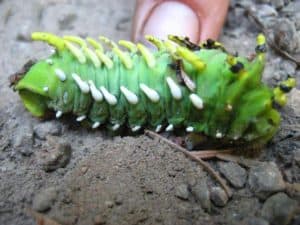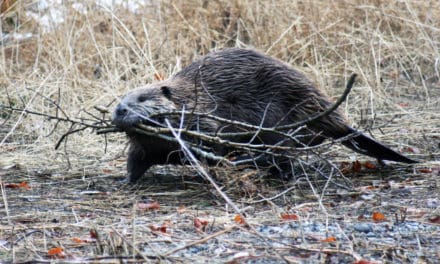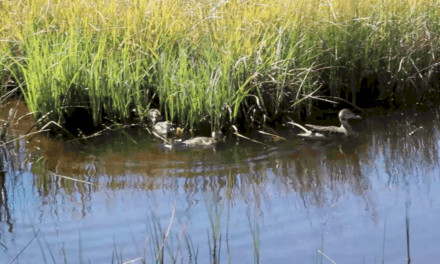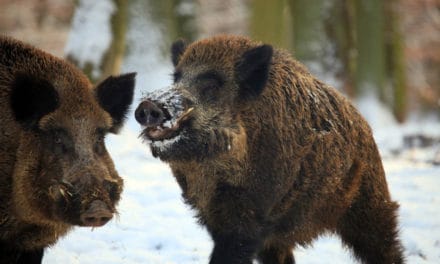Ceanothus Silk Moth: A Beautiful Moth From A Color Changing Caterpillar.
By Melissa Wynn
Moth Photos by Jim Moore, Entomologist
Caterpillar Photos Courtesy of WhatsThatBug.com
 On a warm Spring morning as I reached to unlock the door of our Westwood office I saw a big beautiful, fuzzy moth basking in a ray of sun on the wall beside the door. I was so intrigued by it’s fiery orange head and the Nike swish pattern on her wings that I just had to find out what she was. I carefully captured my incidental treasure in a large plastic storage container and rushed it to the home of our local entomologist, Jim Moore. A few days later I received the following email….
On a warm Spring morning as I reached to unlock the door of our Westwood office I saw a big beautiful, fuzzy moth basking in a ray of sun on the wall beside the door. I was so intrigued by it’s fiery orange head and the Nike swish pattern on her wings that I just had to find out what she was. I carefully captured my incidental treasure in a large plastic storage container and rushed it to the home of our local entomologist, Jim Moore. A few days later I received the following email….
Hi Melissa,
Just a note to say thanks for the Big Moth that you found, and passed on to me. It is a Ceanothus Silk Moth – Hyalophora euryalus.
The Ceanothus Silk Moth is one of the larger moths found within the Mountain Meadows Basin, with a wingspan ranging between 3.5 to 5 inches. It is a western moth and can be found as far north as British Columbia, and as far south as Baja California. 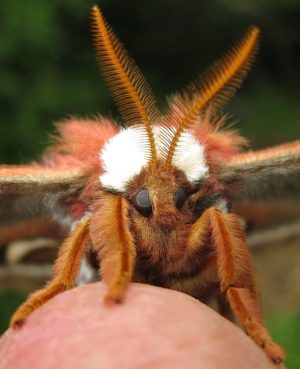
The adult moths emerge from their silken cocoons from January to July depending on altitude, latitude, and seasonal variation. Within the MMB they usually emerge during the months of April through July, once the cold of winter begins to pass.
The caterpillars feed on a variety of shrub species, including its ‘namesake’ Ceanothus species.
The moth that you found was a female, based on the smaller sized antennae, and the fat abdomen. I took it up north of town near Duck Lake and released it.
I have had few other local folks ask me about these big moths; and have seen a few on my nighttime drives home from work.
I have attached three photos of the moth that you found. Truly a beautiful creature!
Jim Moore
After learning the name of my fuzzy little friend, curiosity inspired me to learn all I could and with the help of some research tips and web links from Mr. Moore.
Not only does the adult Ceanothus Silk Moth sport a stunning wardrobe, the caterpillar goes through five phases called instars, that change the color and texture of the frantically feeding youngster. Like many insects, these larval babies shed their skin or molt at each phase, revealing a new style of attire.
At phase one the caterpillar hatches from it’s tiny egg, about the length of the date on a penny, covered in raised orange spikes. This lasts for about 10-15 minutes, then the little larvae turns black. As the time for the second molt approaches slight color variations begin to appear, adding a bit a flair to the all-black first outfit.
The second instar also dons my wiggling wonder with a temporary look. This time an orange gold with small dashes of black down the center of the back and paler spikes. In minutes the new duds become a yellowish green and the spikes become black once again.
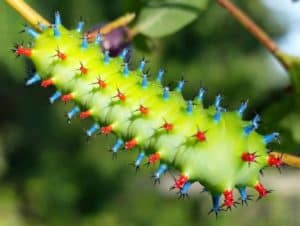 As the crafty caterpillar continues to feast and grow and the third instar approaches, my fashionable friend lightens to bluish white and has
As the crafty caterpillar continues to feast and grow and the third instar approaches, my fashionable friend lightens to bluish white and has
pronounced yellow rings at the base of her spikes. The first minutes following this molt expose a back lined with plump yellow bases tipped in black spikes, white down the back where the black dashes used to be and similar protrusions dressed in the bluish white down the sides. Moments later the permanent colors of this phase emerge in hues of light lime green accented by stunning bases of bright blue and red beneath the signature black spikes. The third instar larvae also sports yellow feet with a black dot like several pair of bossy, high top tennis shoes meant for a teenager.
The fourth instar caterpillar sheds to show off golden orange and sky blue elongated bases tipped with smaller spikes. As the fresh color scheme morphs, my ever growing master of disguise fades from a jade green to a dusty lime, and her fancy feet fade to the same shade of green. Her spikes have nearly disappeared and she is chubbier and growing fast.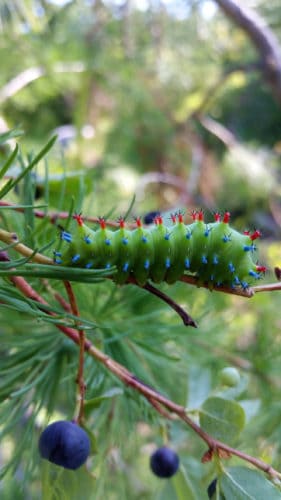
The final molt brings about a caterpillar around six weeks old and three to four inches long. A darker olive green beauty with light yellow and white towers with little or no spikes at all. It is this hearty grub that will spin the cocoon and undergo the biggest metamorphosis, the change to a stunning Ceanothus Silk Moth. This is also the last time this hungry little caterpillar will eat. Adults do not feed and live only a short time to breed and start the cycle anew.
As you wander through the brush next Spring keep an eye out for caterpillars and remember, if you see four or five of different color and size, they might all be color changers on their way to becoming a beautiful Ceanothus Silk Moth, just like my feathery, fantastic flying find.
